...
Imo the 400k resistor is part of the "cybernetics" of the thermal-electrical control system that the LTZ1000 is.
...
Nice ... this call for an experiment.
...
Well, off you go.
Ask and you shall receive

Here are three test results of my latest FX LTZ1000
A reference, which follows the datasheet schematics with LT1013ACN.
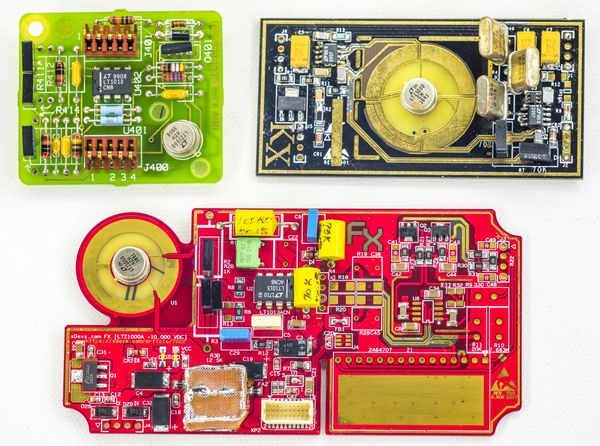
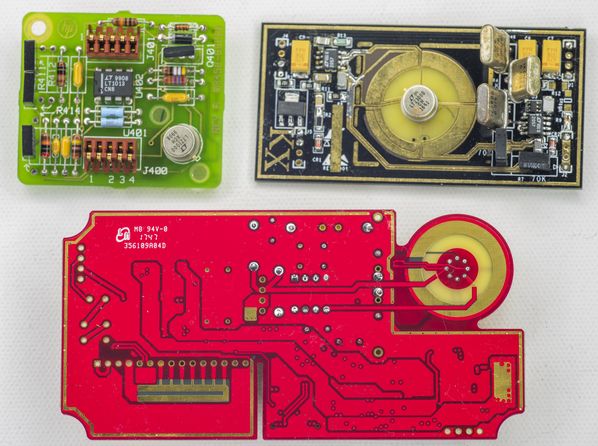
Setup of DUT (not the sample shown on photo above): LTZ1000ACH, 51 week 2016, 1K AE XB BMF, 15K AE XB BMF, two S102 in parallel to get 132R.
Third unit module running tempco test, graceful ramp +20c to +50c, with help of Keithley 2510 and YSI 44006.
LTZ section powered from +11V, sourced by low-noise LT3042 LDO. Input power delivered from Keithley 2400, set at +12V with 105mA compliance.
Output measured by three meters, pair of 3458A and Keithley 2002 (GPIB 4).
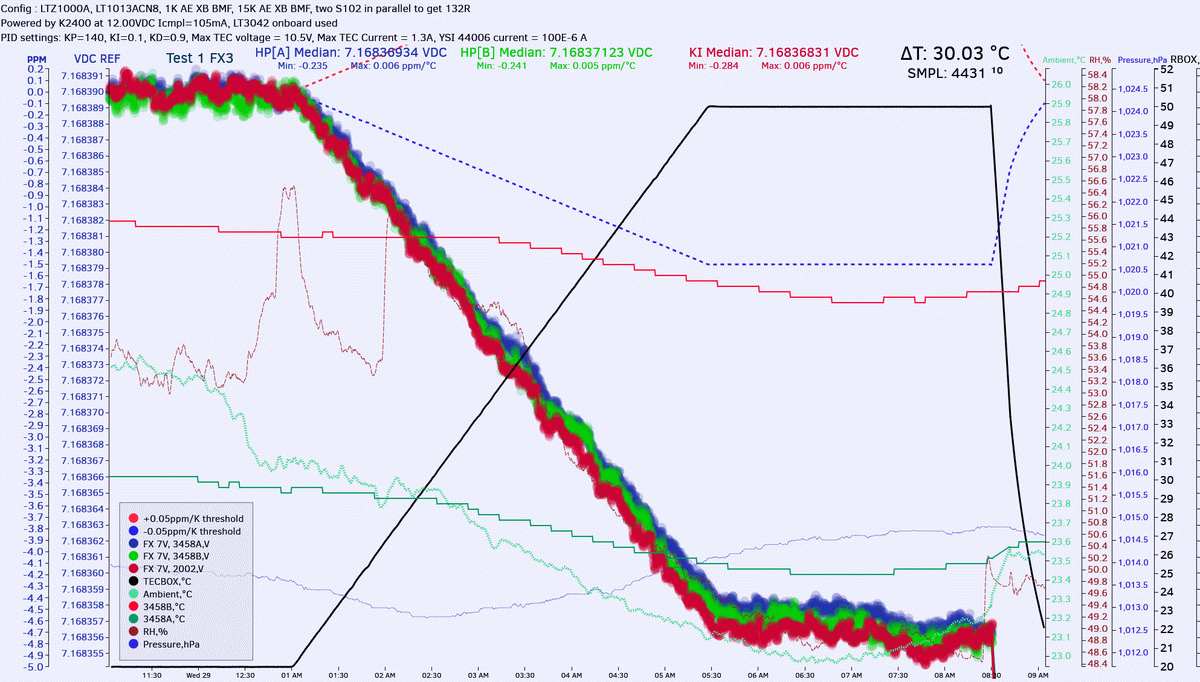
This module provided initial TC -0.25 ppm/K. No compensation resistor populated (R13 position).
For Test 2 additional compensation resistor was added, 390KΩ 5% 1206 on R13 position.
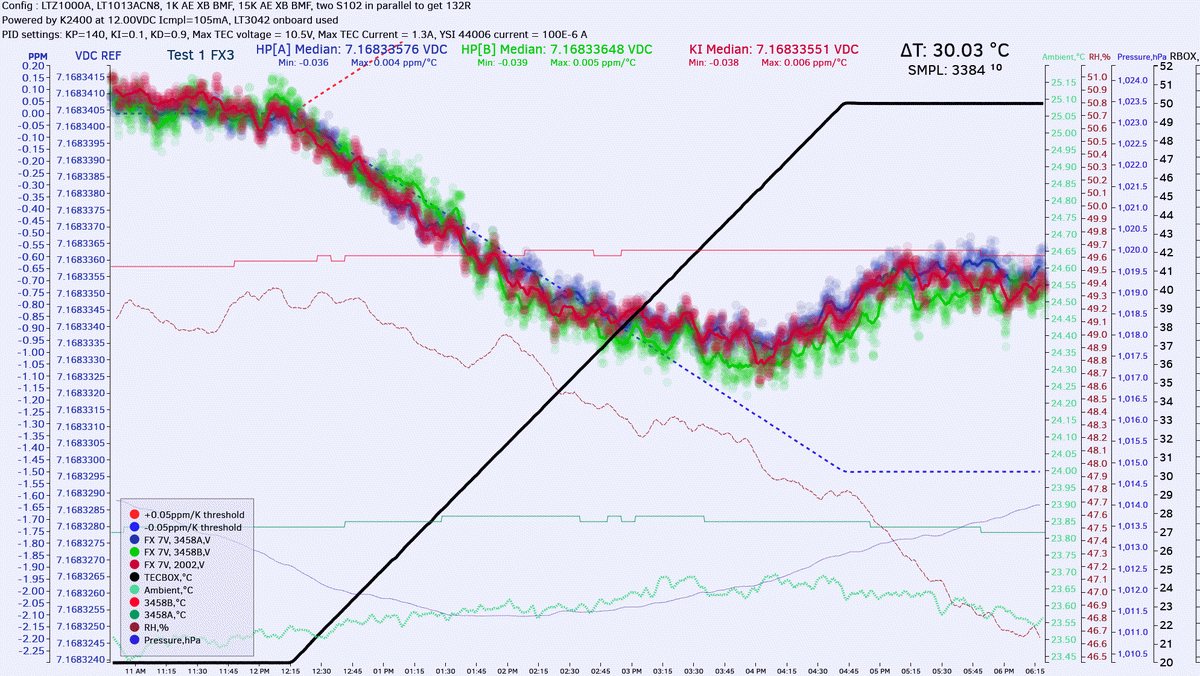
Much better now!
Retest with 331KΩ R13 resistor:
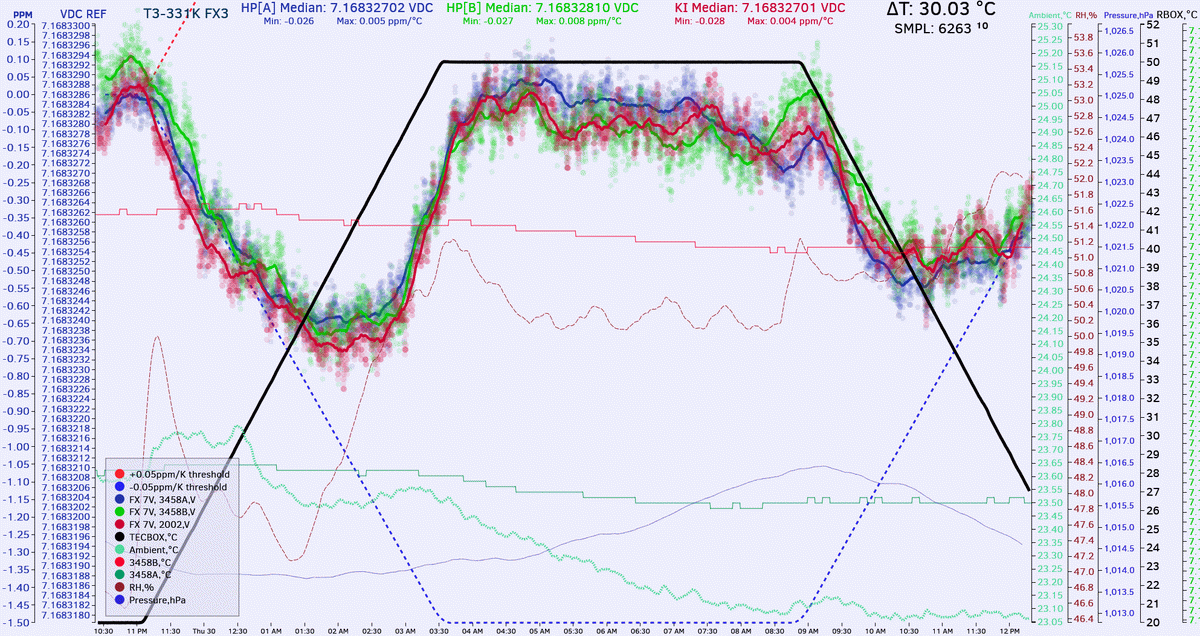
If judge by temperature ramp down curve, then tempco is <0.02ppm/K with this resistor setup. (0.5 ppm change over 25K delta).
Pay attention on the left ppm vertical scale of the graphs, it's not the same between the tests.
Also this is non-aged reference, 0 hours burn-in. I started TC test first thing after assembly.
CSV-file with all data for those who want to play with own plotting/analysis.
As bonus, one can see the 2002 noise performance (20 NPLC, default DFILTER 10 ON, LINE SYNC) compared to 3458A (NPLC100)
